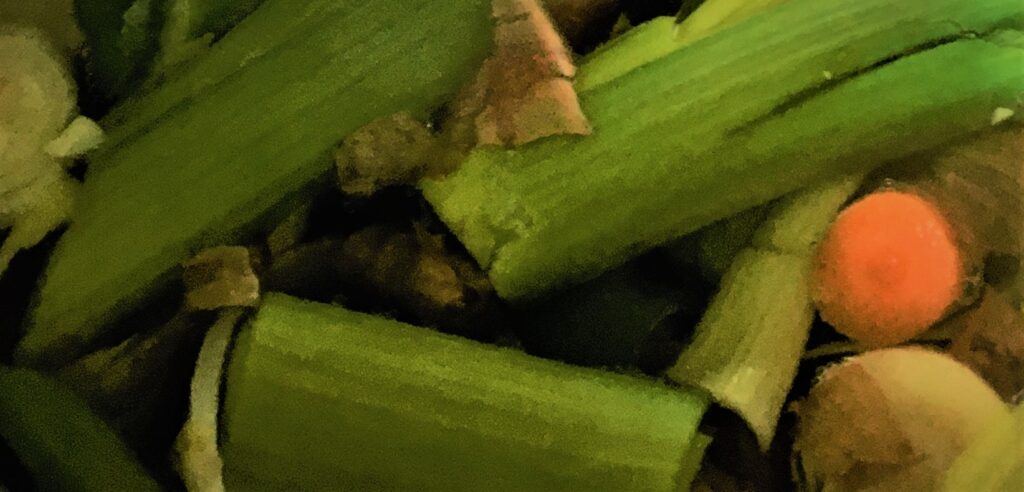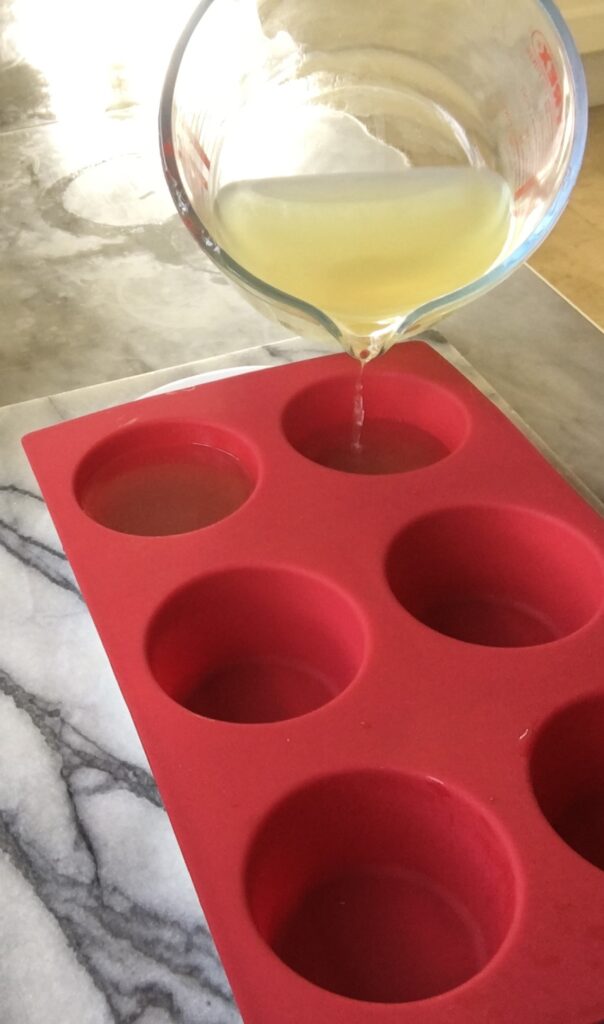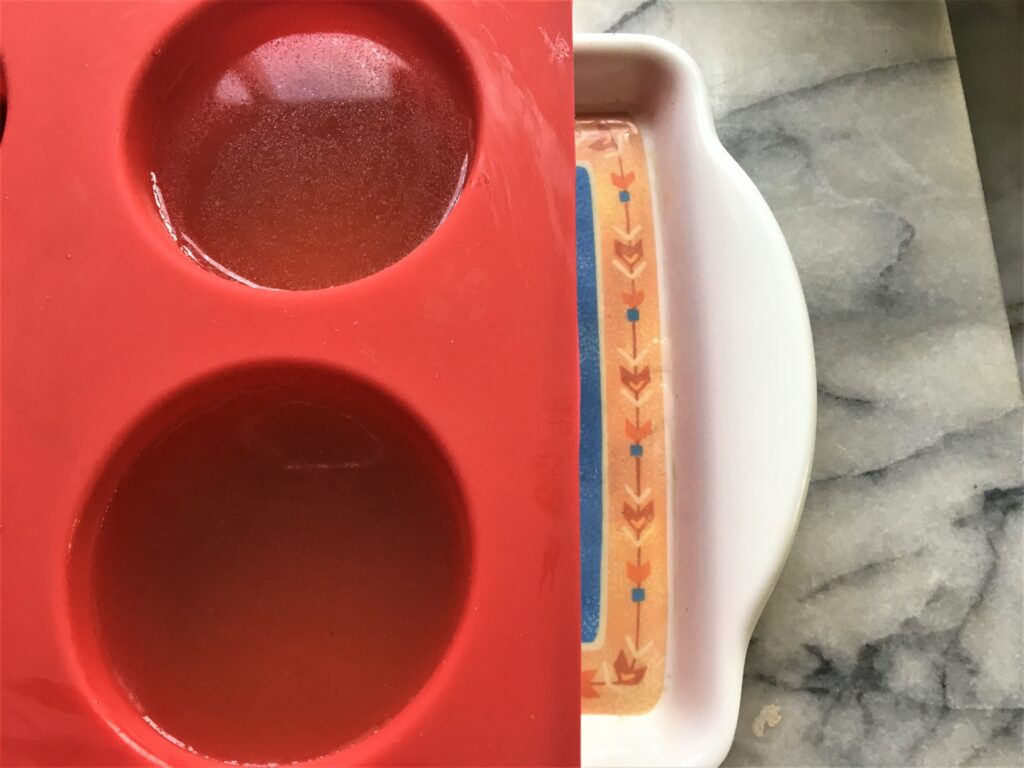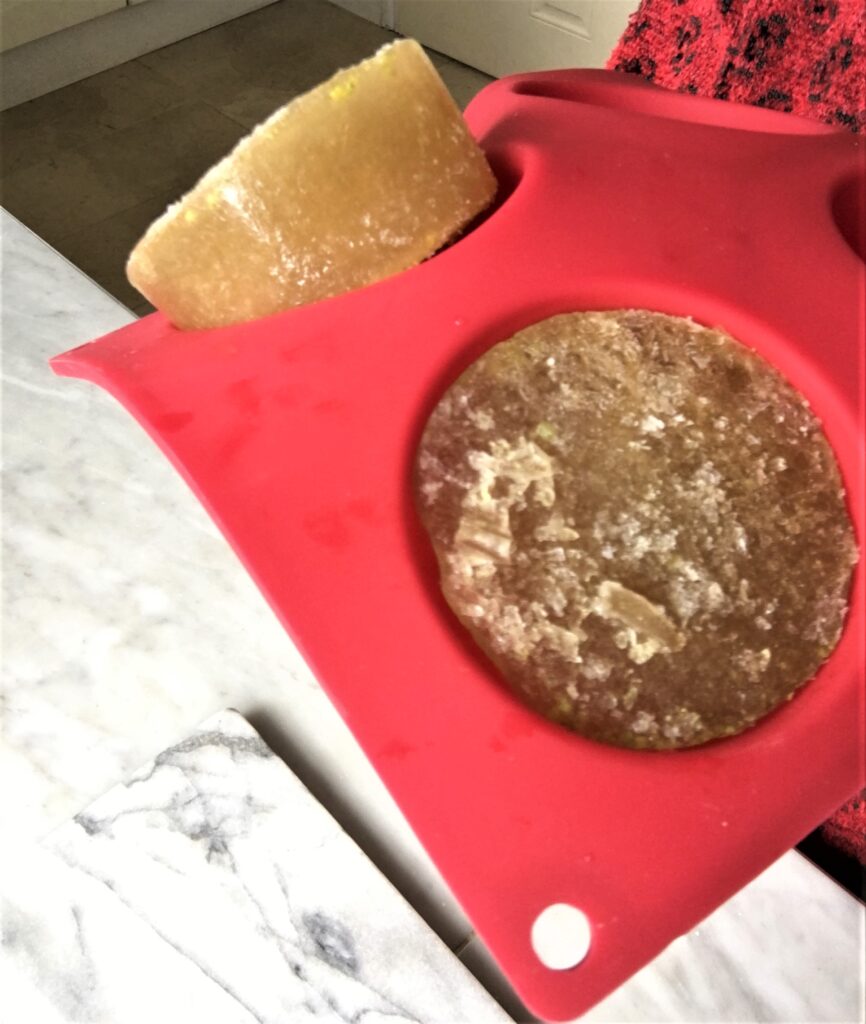Making home-made vegetable stock is easy and an eco friendly way of adding lots of extra natural flavour and goodness to your cooking. It helps to cut down on food waste and packaging and means that you can make the most all those unused vegetable bits that would otherwise end up in the bin.
Onion skins, celery butts, carrot tops and the tough outer stems of leeks can all be used in this way -as long as they are washed and dirt free. Making stock is easy because, once your vegetables are cooking, it needs no further attention and can bubble away in the background while you get on with preparing your meal. Once cooked, it can be refrigerated and used within twenty four hours or frozen, ready to add delicious extra flavour to your soups, sauces, smoothies or stews.
Home made stock is also the best option if you have special dietary needs or preferences.
By making your own stock cubes you know exactly what is in them. Shop bought cubes can be high in salt and often contain gluten, flavour enhancers, palm oil and preservatives.
Which are the best vegetables to use?
Carrot, onion, celery (including the leaves) and leek are the perfect base for a good stock. But you can also add other vegetables such as, for example, part of a fennel bulb for a mild aniseed flavour, or chard stalks for an earthier taste. Fresh herbs like thyme will add distinct aromatic notes to the flavour.
Vegetables to avoid
Cabbage, swede, brussel sprouts and turnip have strong flavours which can be overpowering, so best used sparingly, or not at all. Potatoes should also be avoided as they will make the stock go cloudy.
What is the secret to a good vegetable stock?
Never use old or rotten vegetables. Although you can use vegetables which may be a little past their best, the quality of your stock depends on the quality of the ingredients. If you are wanting a very clear stock and do not have a muslin cloth, you can improvise by using a new J cloth.
First use an ordinary sieve to remove the cooked vegetables, then place the J cloth in the sieve and pour the stock through it and into a clean bowl. To help speed up the process, stir the liquid as it works its way through the cloth and sieve, using a plastic ladle.
Easy Vegetable Stock Recipe
This is the classic chef’s recipe I learnt whilst training. It is the perfect starter recipe as it is so simple and quick to prepare.
Ingredients
- 1 onion
- 1 large carrot
- 1 leek
- 1 celery (stick and leaves)
- thyme, bay leaf, parsley stalks (optional)
Method
- Put ingredients in a pan and cover with sufficient water (approximately 1.5 litres).
- Bring to the boil and simmer gently for around 45 minutes, (this will help extract all the soluble nutrients and flavours.).
- Once cooked, strain the liquid using a fine sieve or muslin cloth* so that you are left with a clear liquid.
- Season with salt and allow to cool.
- You can then either refrigerate it if planning to use within 24 hours, or freeze. To make defrosting easier, freeze liquid in smaller portions or cubes.
Stock making tips:
- Chop your vegetables a similar size so they all cook at the same time. The smaller you chop your vegetables, the quicker they cook.
- You can cook fresh herbs such as thyme on their woody stalks.
Freezing Tips
Freezing the stock into smaller individual portions makes it quicker and easier to defrost the the amount needed. Although you can use an ice cube tray to do this, I prefer to use a rubber muffin tray, as the portions are larger and are easier to remove when still frozen. However, it can be a bit precarious getting it into the freezer without spilling the liquid contents. Therefore to stop the rubber container from wobbling too much, I place it on a plastic tray. Once the cubes are frozen, you can remove them from their container and put into a plastic bag, before returning to the freezer until required.








You must be logged in to post a comment.